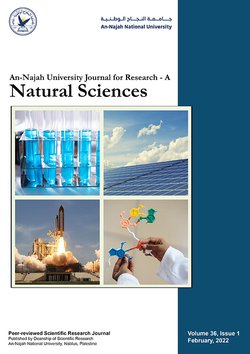GIS-based Flood Hazard Mapping in the West Bank, Palestine
Authors:
Article info
2017-12-04
2018-12-06
1 - 22
Keywords
- Palestine.
- AHP
- GIS
- Flood Hazard Mapping
- Coherent Flood Hazard Management
Abstract
Worldwide, flood is one of the highly damaging natural hazards followed by catastrophic consequences. Thus, it become essential to develop simply obtainable flood hazard map so as help decision makers in formulating of proper corrective and preventive strategies. This study utilizes the Analytic Hierarchy Process (AHP) to develop a flood hazard map to well protect people life and properties. Method applicability was demonstrated on the West Bank, Palestine (5624 km2). GIS-based multi criteria decision analysis (MCDA) employed to combine spatial weighted factors for different criteria including runoff curve number, rainfall depth, flow accumulation, drainage density, surface elevation, surface slope, surface cover, distance from drainage network, and population density. Results indicate that about 29%, 36% and 12% of the total West Bank area are medium, high and very high vulnerable for flood hazard, respectively. Whereas land having low and very low flood hazard areas represent about 15% and 8%, respectively. Moreover, most of the Palestinian communities in different districts are located in high and very high flood hazard prone areas where about 90% of the total population are living. The attained results can be adapted to realize any administrative strategy changes for cohesive flood hazard management in Palestine.
Shadeed, S. (2019). GIS-based Flood Hazard Mapping in the West Bank, Palestine. An-Najah University Journal for Research - A (Natural Sciences), 33(1), 1–22. https://doi.org/10.35552/anujr.a.33.1.1612
[1]S. Shadeed, “GIS-based Flood Hazard Mapping in the West Bank, Palestine,” An-Najah University Journal for Research - A (Natural Sciences), vol. 33, no. 1, pp. 1–22, Feb. 2019, doi: 10.35552/anujr.a.33.1.1612.
Shadeed, Sameer. “GIS-Based Flood Hazard Mapping in the West Bank, Palestine.” An-Najah University Journal for Research - A (Natural Sciences), vol. 33, no. 1, Feb. 2019, pp. 1–22. Crossref, https://doi.org/10.35552/anujr.a.33.1.1612.
1.Shadeed S. GIS-based Flood Hazard Mapping in the West Bank, Palestine. An-Najah University Journal for Research - A (Natural Sciences) [Internet]. 2019 Feb;33(1):1–22. Available from: http://dx.doi.org/10.35552/anujr.a.33.1.1612
Shadeed, Sameer. “GIS-Based Flood Hazard Mapping in the West Bank, Palestine.” An-Najah University Journal for Research - A (Natural Sciences) 33, no. 1 (February 2019): 1–22. https://doi.org/10.35552/anujr.a.33.1.1612.
استخدام نظام المعلومات الجغرافية لتطوير خارطة الخطورة المرتبطة بالفياضانات في فلسطين
المؤلفون:
معلومات المقال
2017-12-04
2018-12-06
1 - 22
الكلمات الإفتتاحية
- Palestine.
- AHP
- GIS
- Flood Hazard Mapping
- Coherent Flood Hazard Management
الملخص
عالميا، يعتبر الفيضان واحدا من المخاطر الطبيعية الضارة للغاية والتي يمكن ان تكون مصحوبة بتبعات كارثية. لذلك، اصبح من الضروري تطوير خريطة مخاطر الفيضان التي يمكن الحصول عليها ببساطة، حتى تساعد صانعي القرار في صياغة الاستراتيجيات التصحيحية والوقائية المناسبة. في هذه الدراسة تم استخدام طريقة التسلسل الهرمي التحليلي (AHP) لتطوير خريطة مخاطر الفيضان من أجل حماية حياة الناس وممتلكاتهم في الضفة الغربية، فلسطين البالغة مساحتها حوالي 5624 كم2. تم توظيف طريقة تحليل القرار متعدد المعايير (MCDA) المستند إلى نظم المعلومات الجغرافية (GIS) في الجمع بين العوامل المكانية الموزونة (حسب اهميتها) لعدد من المعايير بما في ذلك مؤشر الجريان السطحي (CN)، كمية الأمطار، تراكم تدفق الفيضان، كثافة التصريف السطحي، الارتفاع عن سطح البحر، معامل انحدار سطح الارض، الغطاء السطحي، البعد عن شبكة التصريف (الاودية) والكثافة السكانية . تشير النتائج إلى أن حوالي 29٪ و 36٪ و 12٪ من إجمالي مساحة الضفة الغربية معرضة لخطر الفيضان المتوسط والعالي والعالي جداً، على التوالي. في حين تمثل الأراضي ذات مناطق مخاطر الفيضانات المنخفضة والمنخفضة جداً حوالي 15٪ و 8٪ على التوالي. اضافة لذلك، فإن معظم التجمعات السكانية الفلسطينية في المحافظات المختلفة تقع في المناطق المعرضة لخطر الفيضانات العالية والعالية جدا حيث يعيش حوالي 90 ٪ من مجموع السكان. يمكن الاعتماد على نتائج الدراسة وتكييفها من اجل تحقيق تغييرات إستراتيجية مستدامة لإدارة مخاطر الفيضانات في فلسطين.
Shadeed, S. (2019). GIS-based Flood Hazard Mapping in the West Bank, Palestine. An-Najah University Journal for Research - A (Natural Sciences), 33(1), 1–22. https://doi.org/10.35552/anujr.a.33.1.1612
[1]S. Shadeed, “GIS-based Flood Hazard Mapping in the West Bank, Palestine,” An-Najah University Journal for Research - A (Natural Sciences), vol. 33, no. 1, pp. 1–22, Feb. 2019, doi: 10.35552/anujr.a.33.1.1612.
Shadeed, Sameer. “GIS-Based Flood Hazard Mapping in the West Bank, Palestine.” An-Najah University Journal for Research - A (Natural Sciences), vol. 33, no. 1, Feb. 2019, pp. 1–22. Crossref, https://doi.org/10.35552/anujr.a.33.1.1612.
1.Shadeed S. GIS-based Flood Hazard Mapping in the West Bank, Palestine. An-Najah University Journal for Research - A (Natural Sciences) [Internet]. 2019 Feb;33(1):1–22. Available from: http://dx.doi.org/10.35552/anujr.a.33.1.1612
Shadeed, Sameer. “GIS-Based Flood Hazard Mapping in the West Bank, Palestine.” An-Najah University Journal for Research - A (Natural Sciences) 33, no. 1 (February 2019): 1–22. https://doi.org/10.35552/anujr.a.33.1.1612.
An-Najah National University
Nablus, Palestine
Nablus, Palestine
- P.O. Box
- 7, 707
- Fax
- (970)(9)2345982
- Tel.
- (970)(9)2345560
- (970)(9)2345113/5/6/7-Ext. 2628
- [email protected]
- EIC
- Prof. Ismail Warad
An-Najah University Journal for Research - A (Natural Sciences) by An-Najah University, Nablus, Palestine is licensed under CC BY-NC 4.0
